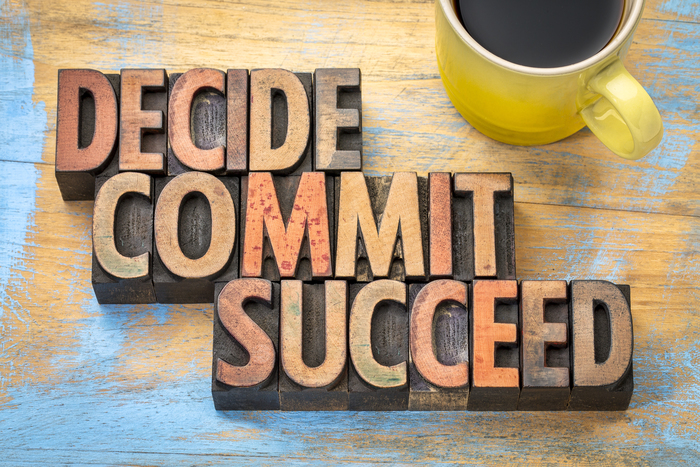Sales Coaching Reinforcement for Lasting Change
When last we met, we discussed the importance of embracing change as a means of improving your sales throughput – and further, that integrating new sales strategies is an exercise rooted in patience, and not in quick fixes.
My particular interest around this topic, understandably, is based on observations I’ve made after years of leading our IMPACT Sales training program here at The Brooks Group.
My goal, then as in now, is simple: Get the Sales Training lessons to stick – PERMANENTLY. We’ve trained tens of thousands of sales professionals, and we find that most go charging out of the training room, ready to take on the world. But without a committed, top-to-bottom plan where change is supported and committed to for the long haul, it’s inevitable that the lessons become undone.
Ongoing Sales Coaching
So how can your organization best commit to the changes? Here are some step-by-step tips that zero in on different phases of the sales coaching reinforcement process:
1. Get Buy-In From Key Stakeholders (Before Sales Training)
Change, as I said, is an all-hands-on-deck proposition. In particular, the support of the most influential members of your corporate leadership isn’t just optional – it’s essential. With this group identified, it’s not enough just to get their rubber stamp on your new approach to sales. You’ll want to include them on the development of the timeline for implementation, so they understand the time horizon involved in a full-fledged metamorphosis.
2. Put Your Company’s Distinctive Mark on the Process (Before Sales Training)
Sales training is not an off-the-shelf product that can be plugged in like a new printer. When designing your training, we look at the personalities involved, your company’s unique goals, and other market forces – and develop a custom training program that resonates specifically with your sales professionals. For example, we see clients who may not want to remove their sales reps from the field, and IMPACT Selling Virtual Instructor-Led Program may be a better fit in this circumstance as this fit’s better with your company’s unique goals and focus. It’s at this time that we look ahead, beyond the classroom – and at the long-term scope of the process.
3. Be Prepared for Obstacles (Before and During Sales Training)
Every organization has them – those “resistors” that don’t feel they need to change, or are unwilling to change in the chosen manner – and wield their influence like a wrecking ball that could tear down the foundation of your sales training adoption plan. Identify these resistors – and, if you can, also single out those champions of the process – and give them both an opportunity to be involved in the pre-work prior to training.
4. Driving Adoption (1-8 Weeks Post Sales Training)
Immediately after the training, I always plan on hosting weekly live reinforcement sessions and coaching for about the first two months, to keep enthusiasm high and to ensure questions and concerns are addressed. It’s during this time that we are also arming sales management to take a visible role – hammering home training messages in team meetings, during one-on-ones in the field, and during joint call audits. One other note here: Remember earlier we talked about patience? You may actually observe that sales will flatten, or drop nominally, while we are breaking old habits. This is normal. Resist the temptation to backslide to old processes. Remain focused, objective – and stay committed to the training goals.
5. Assess and Adjust (8 weeks Reinforcement)
Now it’s time to bring sales management together to look at how each sales team member has managed the transition. It’s also time to listen to specific feedback and to allay concerns. As an example, I encountered a newly-minted sales executive who had just graduated from college. She was very aggressive and assertive in her sales prospecting activity, but still was not having success. Her manager agreed that she was working very hard. In looking beyond the technique, we learned that she was feeling disrespected by the often-older buyers who she was encountering. She would find that they would talk over her, derail the meeting, and ultimately lead to a negative outcome. As we advised her, we reminded her that she was the expert – and she should have confidence in her expertise. Though she may not have the experience that the older buyers had, she has knowledge and insights that they don’t. Moving forward, we recommended that this sales pro start sending out an agenda prior to the meeting. As a defined roadmap, it would serve the purpose of keeping the meetings on track. This also allowed future meetings to end, on the sales pro’s terms, with a request to discuss the next steps. As a result, her sales went through the roof.
6. Standardizing the Process (6 months and beyond Sales Coaching)
At this point, the new sales process should be producing measurable results, and the sales team focused on a new standard of work. The sales management, at this point, should be adept at conducting one-on-one coaching sessions, and the sales team should be aware of what is expected of them during these meetings, and as they approach buyers. In the second year, many companies find it useful to have us come back and conduct a follow-up assessment, looking at the people, the culture, and the management and developing refresher material based on practical and anecdotal data.
Ready to commit to real, lasting change? For over 40 years The Brooks Group has partnered with sales organizations around the globe—helping them to hire, train, coach, and develop salespeople and sales managers to reach maximum performance levels.
If we can help you set your team up for consistent sales success, let’s start a conversation.
Essential Elements of a World-Class Sales Coaching Program
We’ve teamed up with Training Industry Inc., to get to the bottom of the current state of sales coaching. Discover eye-opening stats around what works – and what doesn’t – as it relates to the amount of time, energy and effort a successful coaching program requires.






